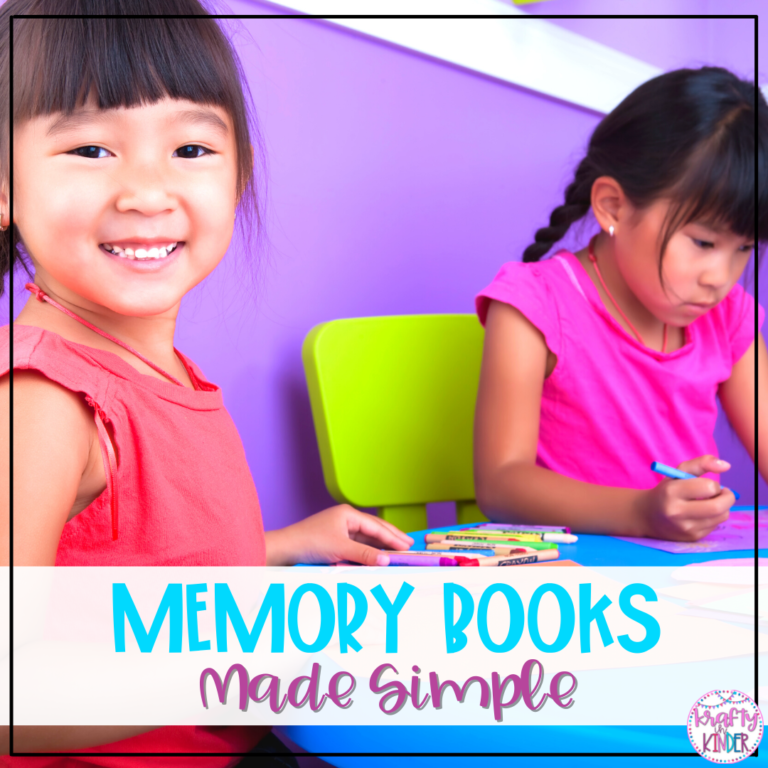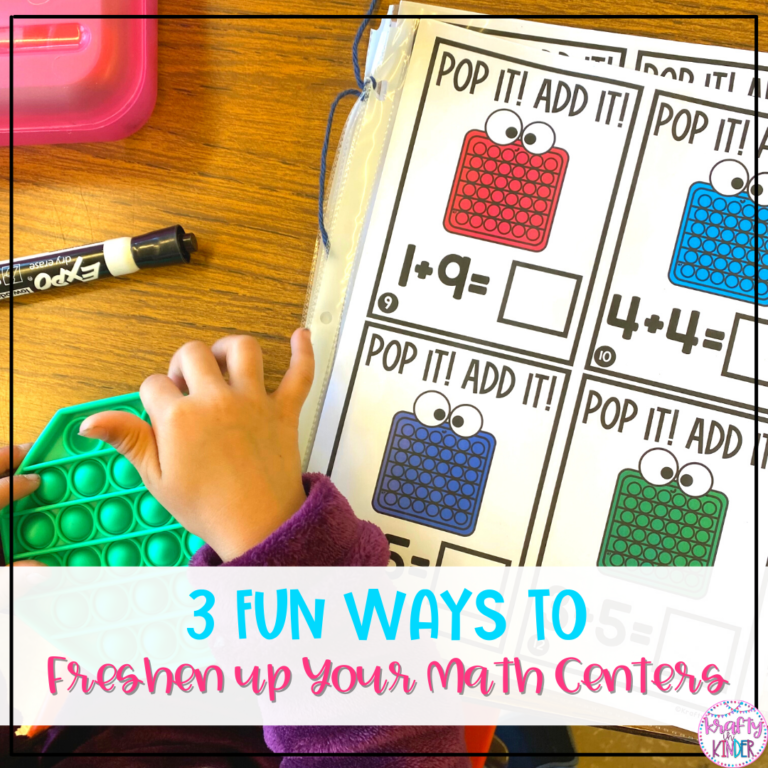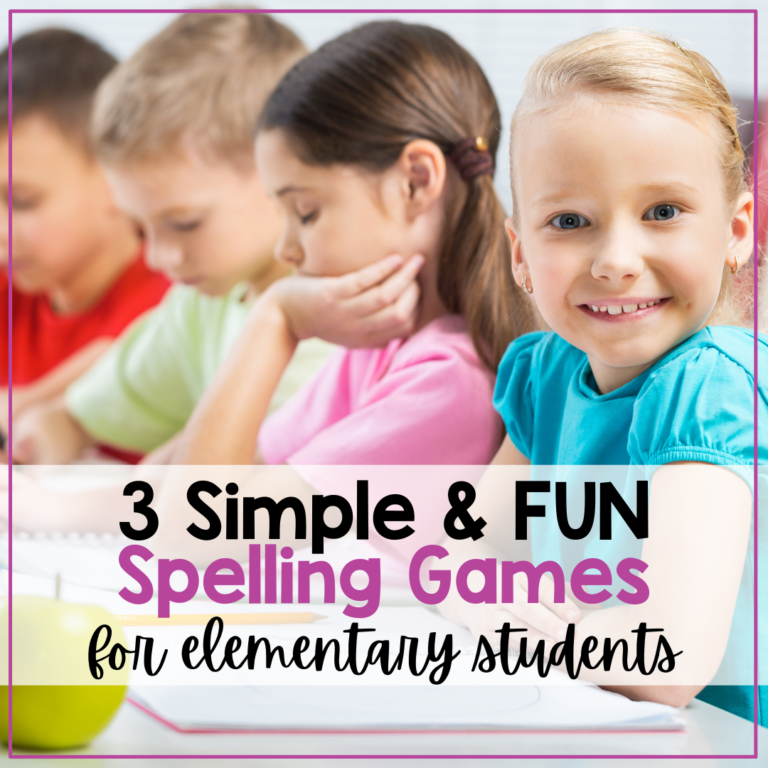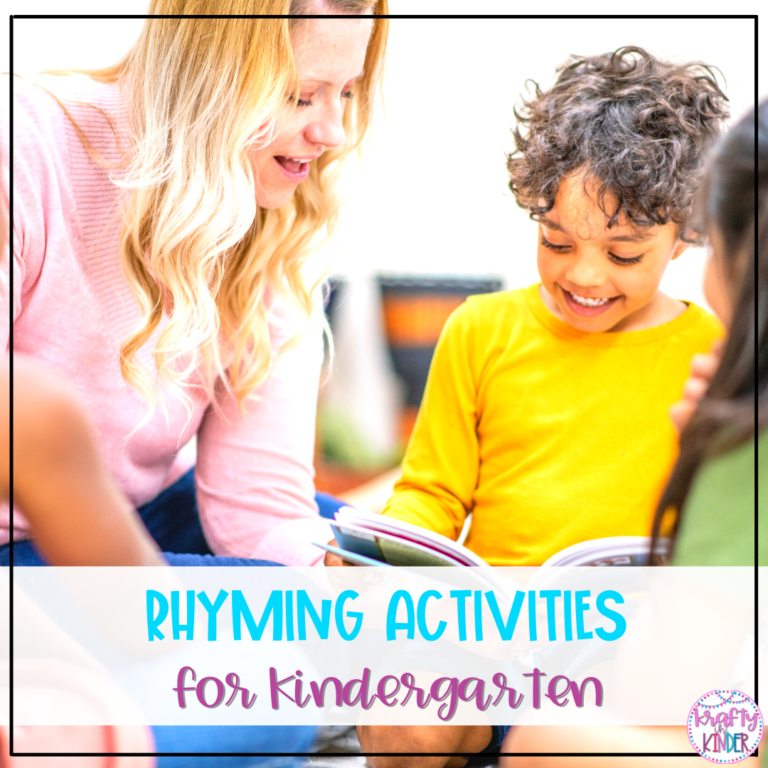Behavior Management Strategies for the Primary Classroom
Whether you’re starting a brand new year or coming back to school from a break, it’s almost certain that you’ll need to revisit behavior expectations with your students. If you’re a primary teacher, I’m betting you already know the depth of this truth! While behavior management might seem daunting to teachers in the primary classroom, it really doesn’t have to be. Come along to see the no-nonsense, clear, and concise system that I’ve found success with in my classroom!
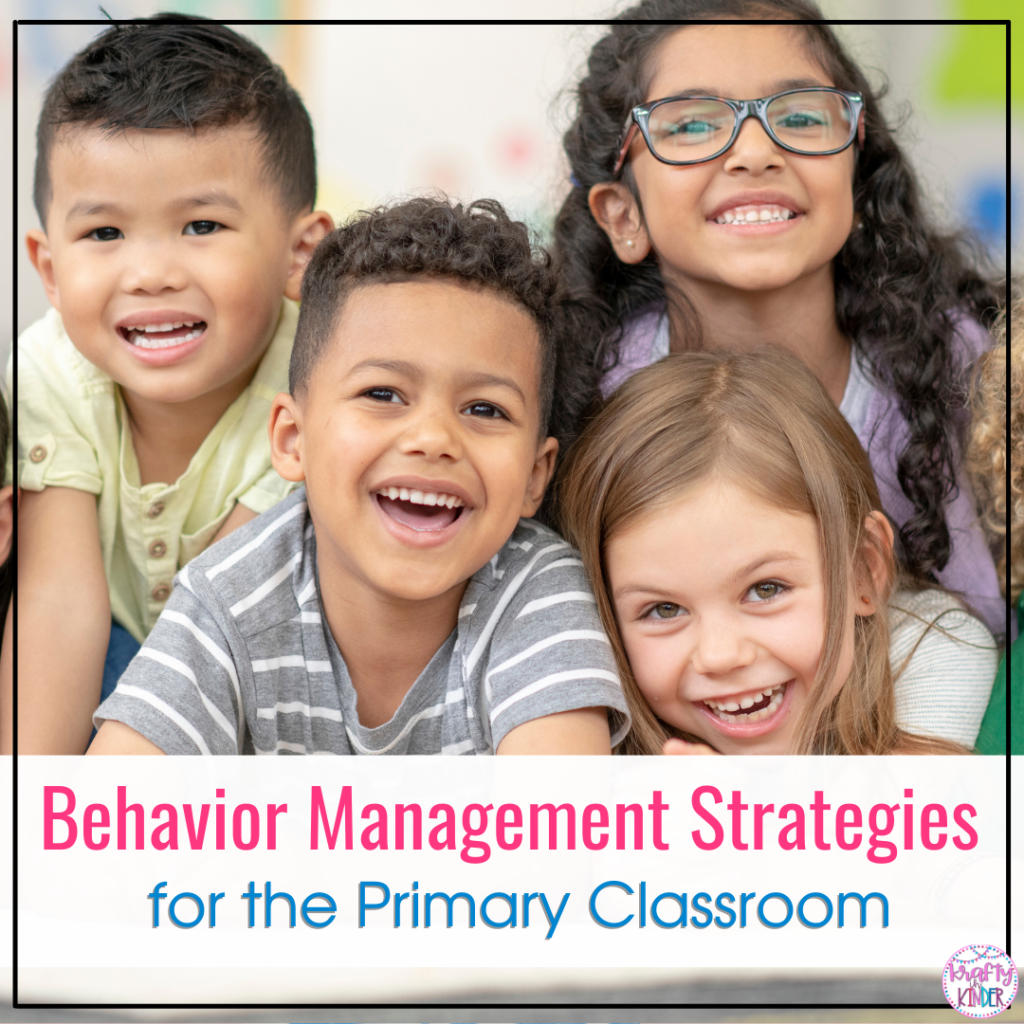
The Quest for Better Behavior Management
As a teacher of littles, I am no stranger to behavior management systems. There are SO many options out there, and let me tell you, I have tried them all! From incentives to “stoplight” charts to clothespin systems, there is a lot to choose from.

Over the years, I have found what works for each group can really vary. What works one year and motivates my students might not be so successful the following year. But one thing that stays consistent is the need for education on behavior expectations.
My time in the classroom has been in kindergarten and first grade and I can say with absolute certainty that many times, what appears as a behavior issue is actually one of not knowing what to do.
While this is a bit shocking at first glance, we need to remember that students come to us from diverse backgrounds and circumstances. What seems like a straightforward expectation for one student might not be to other students who have never been in a school setting prior, or have had limited opportunities for socializing. That’s why it’s important, for us as teachers, to help our students understand our expectations right from the get-go!
To help level the playing field and make sure everyone understood the difference between ideal behavior choices and not-so-great choices, I decided that it was time to create resources to facilitate just that!
Behavior Management Strategies That Really Work!
Once I knew what was lacking in my behavior management systems, my solution came together quickly. I created a simple and easy-to-use system that was appealing and fun for students. It was perfect for the beginning of the year with my kiddos who had no idea about school expectations. It came in handy after winter break, and it even saved the day at the end of the year when the summer crazies set in. Yes, this system was a game changer, and the best part was that my kids liked it too!
Step One: Introduction of Strong and Weak Choices
Our new system was a 3-step process that helped my students grasp what I was expecting of them. It helped provide baseline knowledge for everyone on how to behave at school and which behaviors to leave at the door. This all began with a digital, Google slides activity that I displayed up on the smart board.
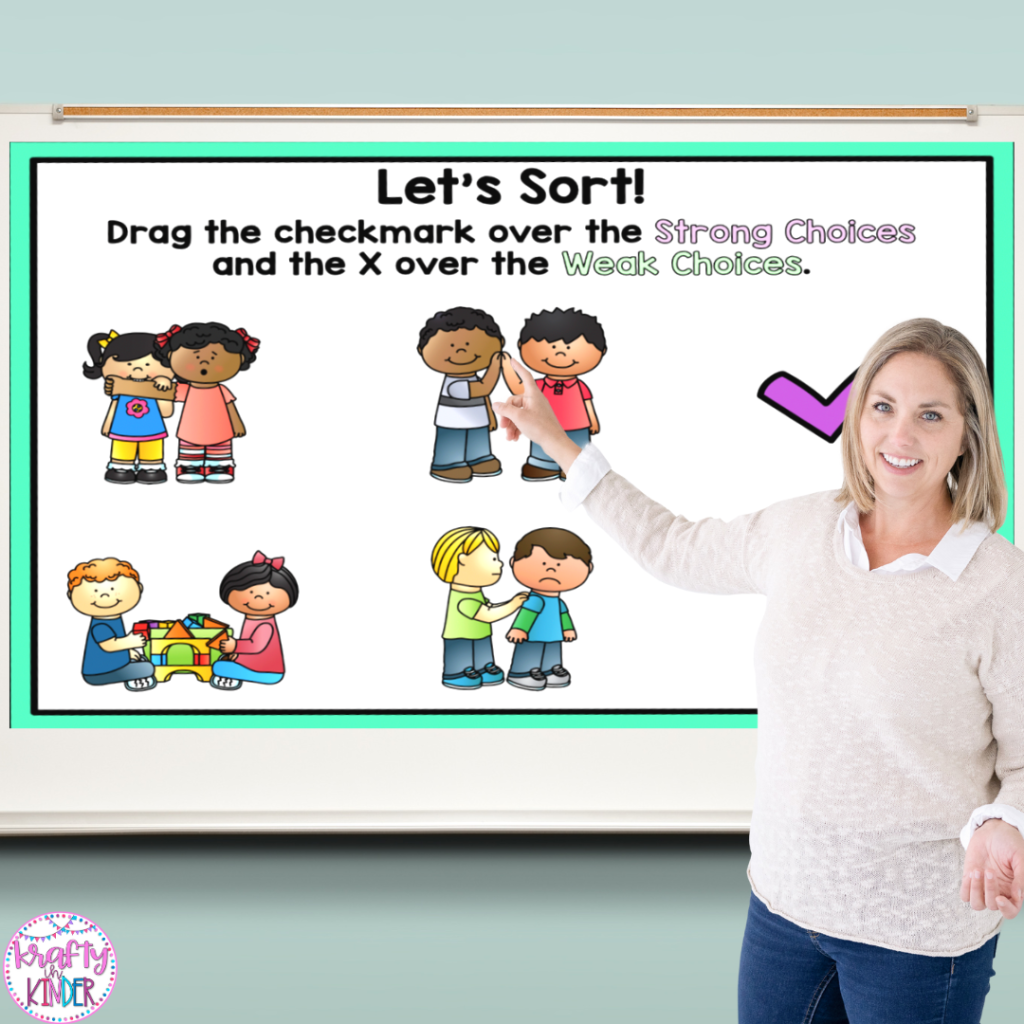
To kick things off, I defined our two categories – strong choices and weak choices. Strong choices are those “good behaviors” that we expect our students to use consistently. Weak choices are those less-than-ideal behaviors that we’re looking to avoid. I intentionally chose this language to help put my kiddos in the driver’s seat and encourage them to make the strongest choices they can make. I’d prefer to avoid the word “bad” with them and instead focus on strength!
This activity consists of teaching slides that define each category clearly and provide examples. I like to read these aloud. After that, we move on to slides that provide even more examples and reasons why making strong choices at school is important. Then, we work on slides with moveable pieces that ask students to identify a strong choice in different scenarios. The choices include things like:
- help with clean-up time vs. hiding under the table
- sliding down the slide vs. climbing up the slide
- sharing materials vs. pushing a friend
We walk through this whole activity as a class and I call on kids to share their answers. I try to make this a community activity and encourage students to share. I aim to make this as positive as possible! If students feel empowered to make strong choices, the whole classroom benefits!
Step Two: Sorting Strong and Weak Choices
I am a big fan of variety in the classroom, so we often switch back and forth between digital and printable activities. After our whole-group sorting activity, we use a pocket chart sort and worksheets to practice identifying strong and weak choices. There are a couple of ways you can use these resources with your students:
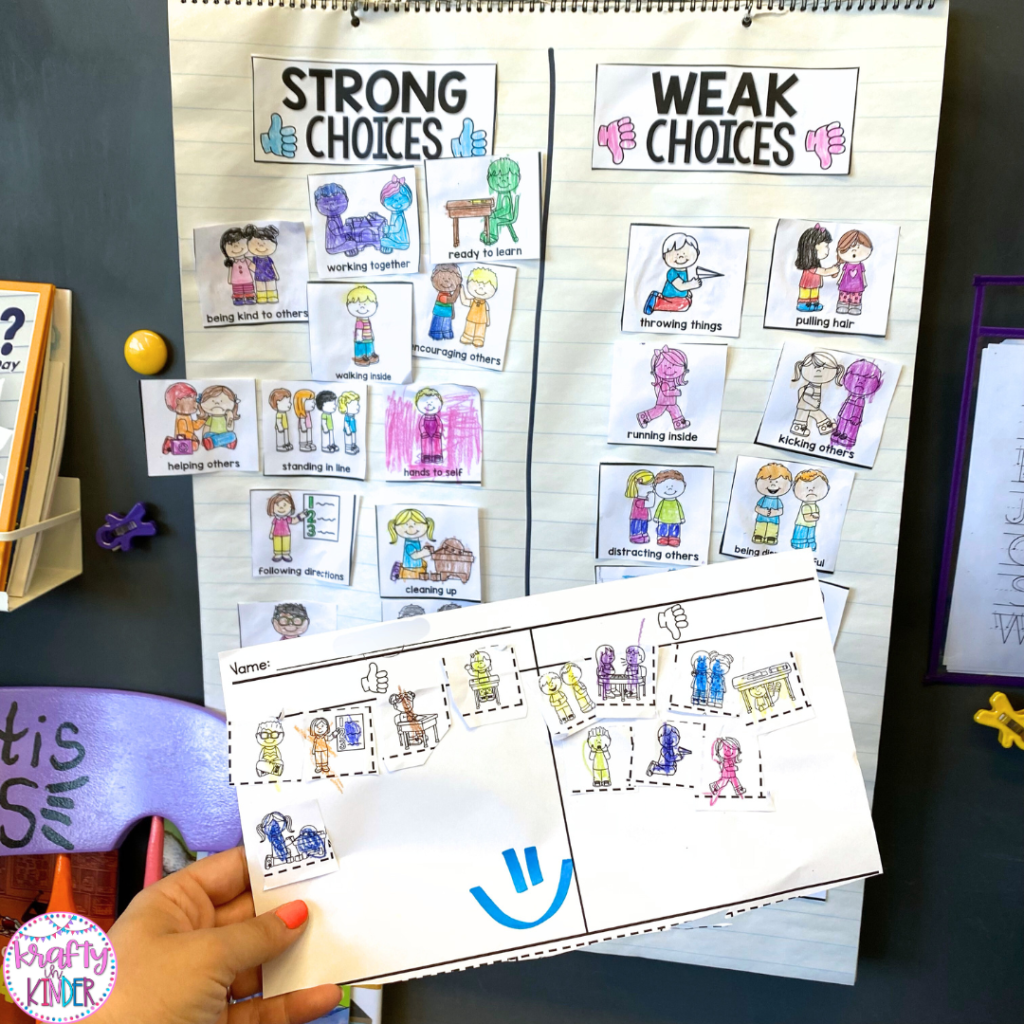
- Sort out the large cards in a pocket chart as a group, and have students complete the cut-and-paste worksheet as you go.
- Sort and glue the large cards onto a poster board or chart paper first and then send students off to complete the cut-and-paste worksheet afterward on their own.
- Use the large cards for a center activity and have students record answers using the cut and paste worksheets.
You aren’t limited to just one choice either! You might decide to use the pocket chart together as a class first, then glue it down to posterboard to create a visual for your classroom, and finally send kiddos off to complete the worksheet on their own. The best thing about this resource is that it’s flexible. Use the sorting cards as a center activity during the first week of school as a teaching tool, or both! The options are endless, making this a great way to give your students more opportunities to identify strong and weak choices.
Step Three: Follow Up & Review
As a final piece in our behavior management system, I use Boom Cards for one more chance to review. Boom Cards are great for use during center time and it’s a fun way to sneak in some additional practice identifying appropriate classroom behaviors. I love this activity because it’s interactive and provides immediate feedback.
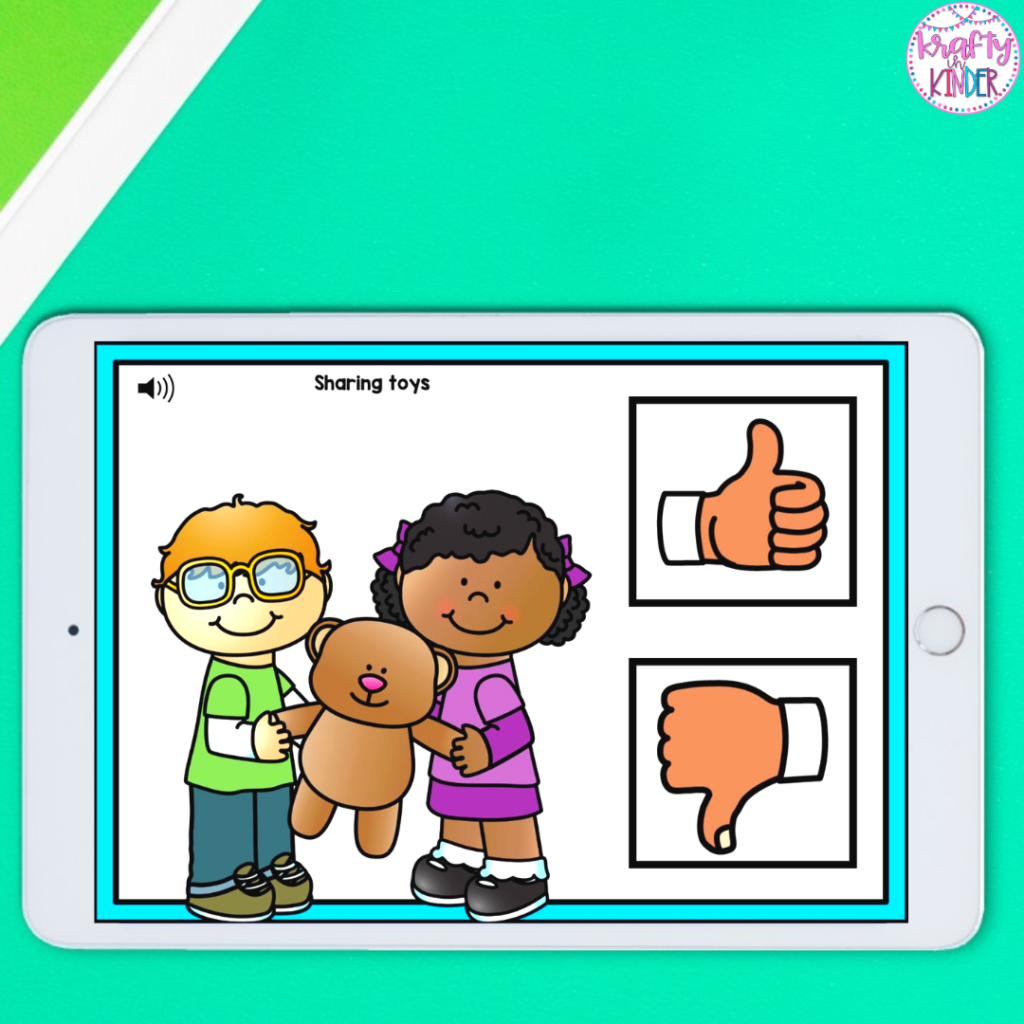
To use, students will click on the speaker to hear the audio explanation of what is happening in the picture. Then, they will click on the thumbs up or thumbs down to indicate if it is a strong or weak choice. There is also an audio directions card that plays at the beginning, so students can use this activity all on their own!
These Boom Cards are also great for using a whole-class review when students need a quick reminder. It’s a fun game-like addition to our discussion on this topic. Simply share the screen and interact with it together as a class!
Finally, try assigning this as homework if you’d like to involve parents in your behavior management system. This is a great way to open the line of communication about expectations at school and how you can support each other in this!
Make Behavior Management Simple
If you’re ready to make behavior management simple and streamlined, be sure to check out all of these resources here! In this bundle, you’ll find the Google Slides lesson, the large sorting chart, the cut-and-paste worksheet, and the Boom Card activities! This is everything you need to set your students up for success and make managing behavior throughout the year accessible and simple. Revisit these activities as needed and help your student make strong daily choices!
If you want to test out this system in your classroom, I’ve got good news! Grabe a free set of Boom Cards by entering your email below. This is a sample of what my behavior management system is like and will help you get a feel for what to expect.
If you’re in the trenches with challenging behaviors, don’t fret- there is hope! Often, students simply need an in-depth lesson on the classroom expectations. Having the full bundle of materials in your arsenal will make this fun and easy! I know that once you start using this system in your room, you’ll have better days and happier kiddos. Behavior management doesn’t have to be a drag, I promise! Grab the freebie and get started with your students today!
Save This Post
This post is filled with great ideas for behavior management in the primary classroom. Pin this post on Pinterest to keep these ideas and activities top of mind!



